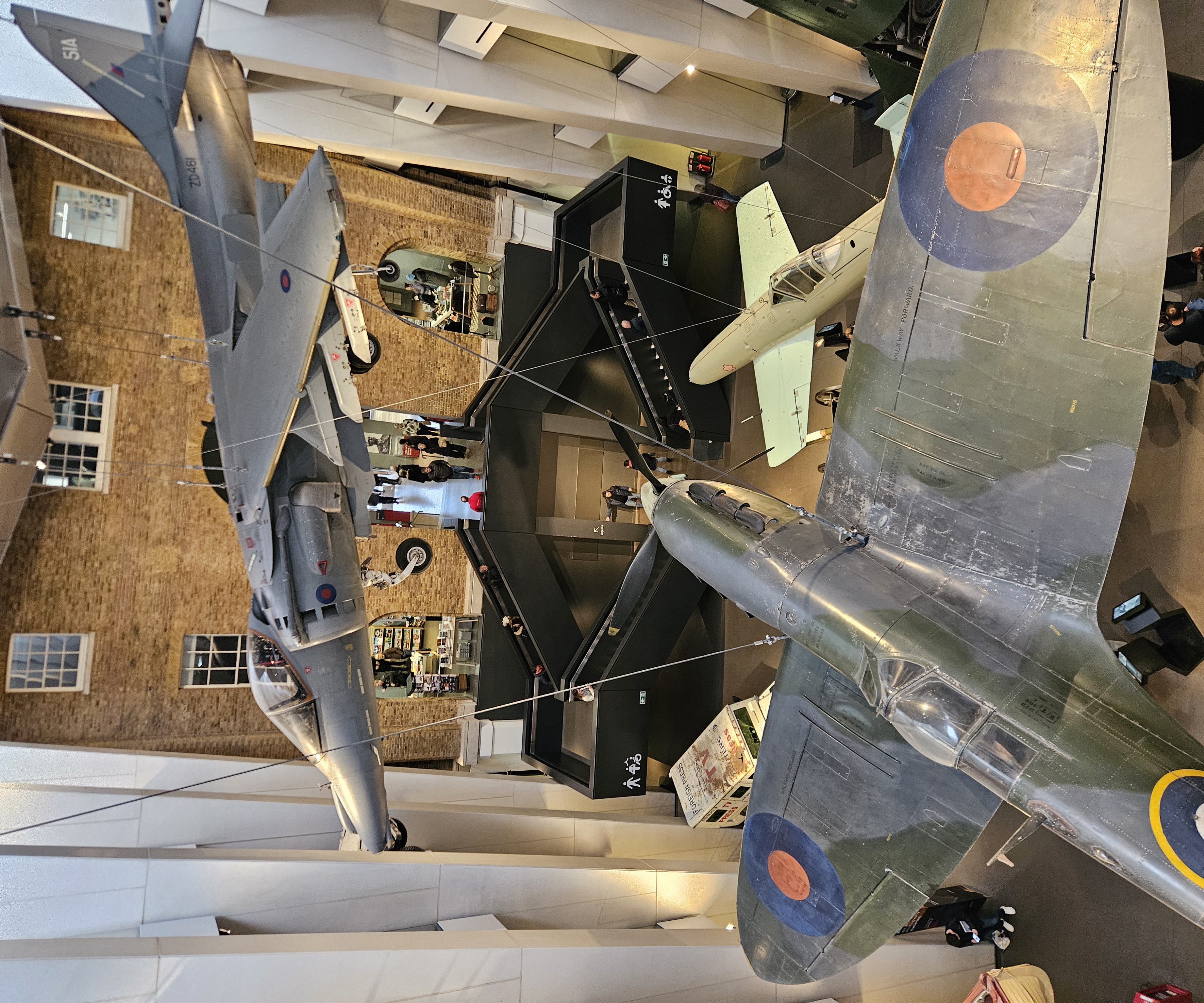In our return trip to London as a part of our Northern Europe Tour 2024-2025, we wanted to visit some more museums. However, there are so many to choose from, that we had to prioritise which ones to visit. So, as Christian had never been to the Imperial War Museum, but had been to the Science Museum, The Natural History Museum, and the Victoria and Albert Museum, the visit to the IWM was selected. We had already been to the Churchill War Rooms, which is a part of the Imperial War Museums, on our previous trip to London.
Imperial War Museum, Lambeth
We got the tube to Lambeth North, and followed the signposts to get to the Imperial War Museum. The building was originally the Bethlem Royal Hospital Asylum, and then it was transformed into the museum in 1936. At the front are two very large 15″ naval guns, and a small section of the Berlin Wall. Entrance to the museum is free, but donations are encouraged.




We asked for guidance, and were told to start at the basement level where it was World War I focused. We observed the large items in the middle of the museum, the Spitfire, Harrier Jump-Jet, a V1 and a V2 missile, and a Sherman tank. As we explored the exhibits, we learned about the causes of the Great War, and about trench warfare. There was a very well executed simulation of a trench with a World War 1 tank above it, and displays of weapons, uniforms, papers and posters from the era.




As we rounded the World War I displays, we went to the next floor up (through an un-marked entrance through the gift shop), and saw the World War II displays. The first items we saw were a Japanese Zero plane, a tank and uniforms.
World War 2
We entered the main World War 2 display, and saw an Enigma machine, and were able to use a hands-on simulator to show how it worked. The display showed field artillery pieces, uniforms of Nazi soldiers, and I was interested to see the Norden bombsight – and to read that it was not as accurate as stories had made out.




On one of the side floors, larger equipment was on display, including part of a Lancaster bomber, a Jeep and miniature submarines. There were war-damaged artefacts, as well as items that looked very well preserved.




We went up a floor to look at the more modern displays. On the third floor, the first thing we saw was a replica of the “Little Boy” atomic bomb that was dropped on Hiroshima, and suspended from the ceiling were a range of other modern nuclear missiles and bombs. There was a section of the World Trade Centre from 9/11 and other interesting artefacts.
Holocaust Exhibition
One of the more interesting displays was the horrific and harrowing account of the Holocaust. This started with an explanation of how Hitler came to power, even when his party had fewer votes and less support, and then explained the lives of Jews before the war began. The accounts and stories of people were well personalised so we would feel and understand their lives.
As the display continued, we then had the accounts of how they were persecuted, then rounded up, then systematically executed and transported. The display showed the cattle train carriages, and photos and accounts of the people involved. Then the final room showed the cattle train carriages, and photos and accounts of the people involved. Then the final room showed the liberation of the camps, and how bad the internment had been.







